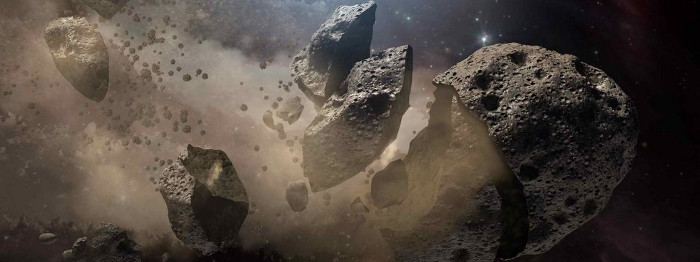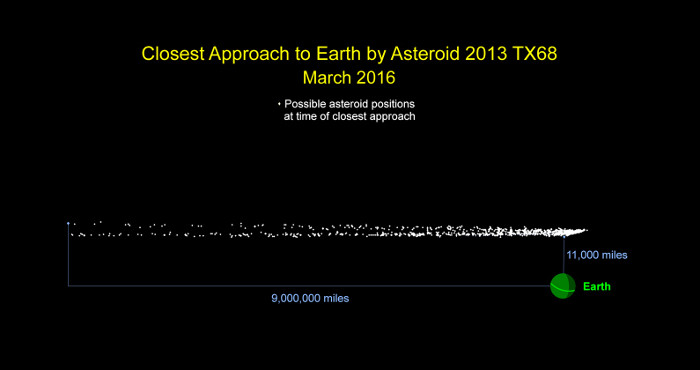A 30-meter asteroid travels through the Earth in March
The US Aeronautics and Space Administration (NASA) said an asteroid discovered two years ago could "approach" our Earth on March 5. Specifically, the 2013 TX68 has an estimated diameter of 30 meters and is thought to pose no danger to the globe. However, how close it is to Earth at a distance is still a mystery to date.
According to NASA's prediction, the 2013 TX68 will skim over the green planet with the farthest distance of 14 million km, and the nearest 17,000km. The reason for such a big difference is because NASA can only monitor the asteroid above for 3 days, when it began to approach Earth on October 6, 2013.

2013 TX68 will skim across the green planet with the longest distance of 14 million km.
"Because they were not followed long enough, scientists could not accurately predict its orbit around the Sun, but they knew that it could not affect the Earth in a passing flight next month" , NASA explained. When asteroids fly over Earth next month, NASA telescopes will closely monitor without missing a moment, allowing scientists to better identify the trajectory of the 2013 TX68 around the Sun and predict other "close" times in the future.
NASA's Near-Earth Flying Object Research Center also made their prediction, suggesting that asteroids may approach Earth on September 28, 2017, with a probability of collision around 1/250. million. Even if the 2013 TX68 really "attacked" the planet, we probably wouldn't be the victim of a large-scale extinction.

The closest distance of the 2013 TX68 to Earth is still a mystery.
Three years ago, a 17-meter-diameter meteorite exploded in the sky of Russia, shattering thousands of glass doors in the city of Chelyabinsk, before falling into a frozen lake outside the town. That event did not cause any other significant damage.
What scientists are more worried about is probably the ability it can collide with satellites operating in orbit around the Earth.
- A 2,000-meter asteroid could crash into Earth in the future
- The asteroid is about to fly closest to Earth in 115 years
- A 15-meter asteroid has just flipped the Earth
- Asteroid travels through the Earth
- Video: The 7m asteroid is about to rush through the Earth
- The 40-meter asteroid is about to fly over the Earth
- The asteroid carrying the name of the god of death will sweep through the Earth in 2029
- March 9 an asteroid will
- This afternoon, an asteroid will fly over the Earth
- Asteroid 800,000km2 fly near the Earth
- An asteroid has just crossed the Earth
- 2012 Asteroid BX34 almost collided with the Earth
 Van Allen's belt and evidence that the Apollo 11 mission to the Moon was myth
Van Allen's belt and evidence that the Apollo 11 mission to the Moon was myth The levels of civilization in the universe (Kardashev scale)
The levels of civilization in the universe (Kardashev scale) Today Mars, the sun and the Earth are aligned
Today Mars, the sun and the Earth are aligned The Amazon owner announced a secret plan to build a space base for thousands of people
The Amazon owner announced a secret plan to build a space base for thousands of people